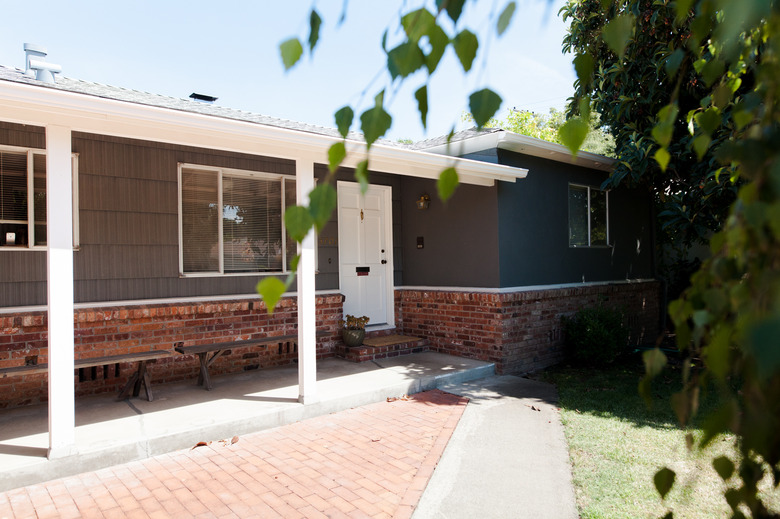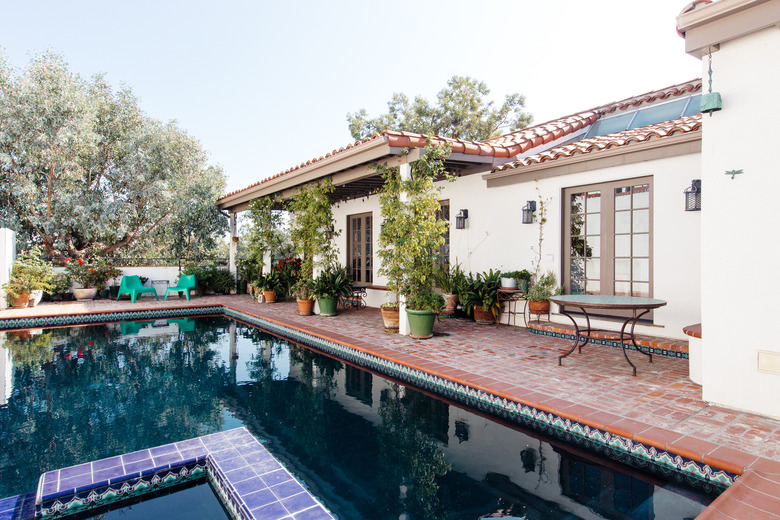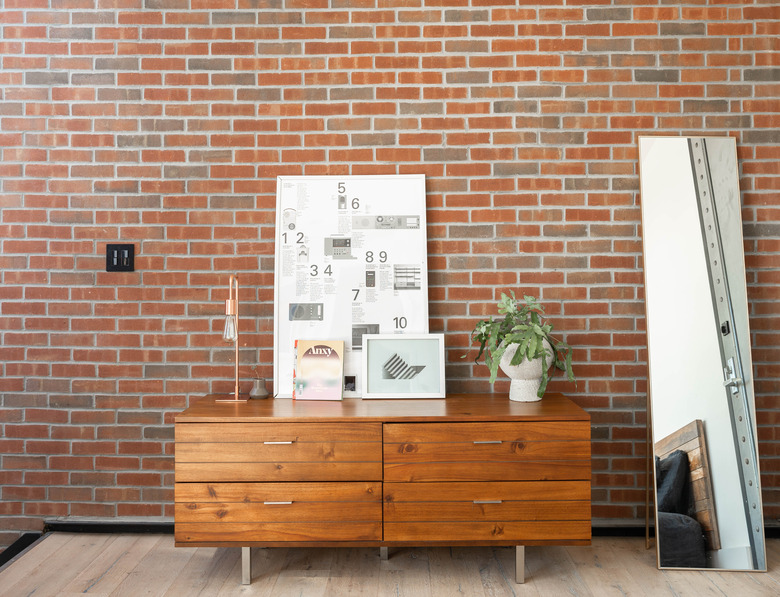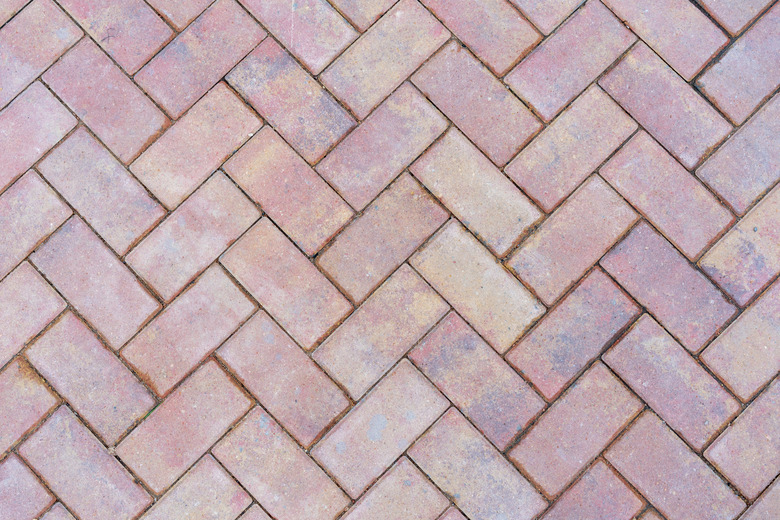Brick Tiles: A Homeowner's Tile Flooring Guide
Brick tiles, commonly called thin brick or brick veneer flooring, are slim, high-density bricks designed for interior and exterior flooring. They provide a warm, rustic appearance and are easy to maintain. On the downside, they can be a bit pricey to install, and some people do not like the look or feel of these floors.
About Brick Tile
About Brick Tile
Brick tiles can give your home a historic feel with an authentic look and can be used for indoor flooring as well as outdoor flooring, including patios, walkways and driveways. While these are made from clay or shale-like traditional bricks, they are different from the types you'd see used in a brick wall, which are usually 2 1/4-inches thick and have holes in them that make the production less expensive and allow for better insulation. When made for flooring, brick tile pieces are solid and are made to be only 1/4 to 1/2 inch thick.
This means brick flooring will be a similar height as most other flooring options, making transitions from two types of flooring easy. The solidity of these bricks also means they are very durable and can support heavy loads.
Pros and Cons of Brick Tile
Pros and Cons of Brick Tile
Brick floor tile has many unique properties, and it's important to consider the pros and cons before committing to this flooring option. Some of the biggest benefits include:
- Durability: Brick is
a notably durable material, which is why it has been used for thousands of years.
It's so durable that it is even resistant to fire. It wears down so slowly that
a quality brick floor that is well maintained can last hundreds of years. - Eco-friendly: As the Brick Industry Association points out, bricks are made from naturally occurring,
abundantly available materials that last a long time and rarely need to be replaced.
You can even make floors from reclaimed bricks. If you do replace your
brick flooring, it can be recycled. - Anti-slip: Because brick tiles are naturally rougher than
traditional tile options, they are naturally slip resistant, even when wet. This is one reason thin brick is particularly popular in kitchens, laundry rooms, mud rooms, entryways and garages, where water may spill or be tracked in from outside.
While there are many great reasons to install brick tile in your mud room, garage or living room, there are also some downsides to the material, including:
- Difficulty of installation: While many companies selling
thin brick promote their products as easy to install, if you are not very
experienced with home improvement, installing thin brick may not be a great
project for DIY beginners because they are hard to cut and require a perfectly flat subfloor to ensure there are not dips and bumps in your floor. - Availability: While you can find brick pavers at most home
improvement stores, these are usually designed for outdoor use, meaning they
are too thick and heavy for indoor use. Instead, you may have to order your
thin brick from specialty companies such as Real Thin Brick or Inglenook Tile. While ordering from an online specialty company may not be a huge problem, expect to pay a decent fee for shipping, and if you find yourself short of materials while installing your floor, you'll likely have to wait weeks for your extra materials to arrive while your floor sits uncompleted. - Lack of universal appeal: Whereas most people can appreciate
a quality tile or hardwood floor, a lot of people don't like the rustic look of thin brick, so if you are selling your home, this could actually lower the
resale cost. - Rough, hard surface: Many people find brick uncomfortable to
walk on.
For those who are turned off by the cons of thin brick, it is also possible to get brick-look tile made from ceramic or porcelain tiles instead. These are made to look and feel like real brick tile.
Thin Brick Options
Thin Brick Options
Brick is made from natural clay or shale materials, making it similar to wood floors in that no two pieces of brick floor tile ever look quite the same. As a result, brick floors will always be a little mottled unless they are painted over with a solid color. That being said, there are many different options for colors and tones, as natural clay powders can be added to change the tone to create gray, black, orange, brown, yellow or white brick shades.
Similarly, the molds and finishing techniques used can also change the style, shape and texture of a brick, ranging from a smooth, brand-new hexagon to a worn-down, antique square. There are even some companies, such as Georgia's Vintage Bricks, that take reclaimed antique brick with authentic patina and then cut it into brick floor tile.
The cost of brick tiles will vary depending on what options you choose, but it will generally come out to $5 to $10 per square foot. If you choose to hire a professional installer, you can expect to add an extra $6 to $8 per square foot in labor costs, meaning the post-installation cost will be around $11 to $18 per square foot. Even at its least expensive, brick flooring is pretty pricey, but it's such a durable flooring material that you may never have to replace it.
Brick Flooring Installation and Care
Brick Flooring Installation and Care
Brick tile installation is very similar to that of tile installation. If you choose to go the DIY route, you'll want to make sure you start with a subfloor that is as smooth as possible. Otherwise, your floor may end up having dents and bumps. If you are installing on a wood surface, you'll need to install cement backer board using thinset mortar first. When installing on concrete, a decoupling membrane is recommended to prevent cracks that might develop in the subfloor from spreading into the brick or the mortar joints.
Choose a layout pattern you like and then lay out the thin brick according to the pattern before securing down the bricks using a wet saw to cut bricks to fit in small or odd-sized areas. Some of the most popular patterns are running bond, herringbone, half basketweave, diagonal herringbone and jack on jack. Use mortar recommended by the manufacturer to glue the bricks to the subfloor. When the bricks are fully laid, use mortar or sanded grout to fill in the space between each brick.
One downside of bricks is that they are not naturally water resistant and are easily stained. Grout also has this problem, which is why you need to seal bricks and grout once the grout dries. For a shiny surface, use a surface sealer that sits on top of the bricks and grout. For a matte surface, use a penetrating sealer that goes into the bricks and grout to invisibly protect them from stains. Penetrating sealers rarely need to be reapplied, but surface sealers need a new layer added every few years.
Once brick floors are fully sealed, they are easy to maintain and just require regular vacuuming and mopping. Vacuuming is better than sweeping for brick flooring because dirt and dust can settle in the pores of the bricks.



